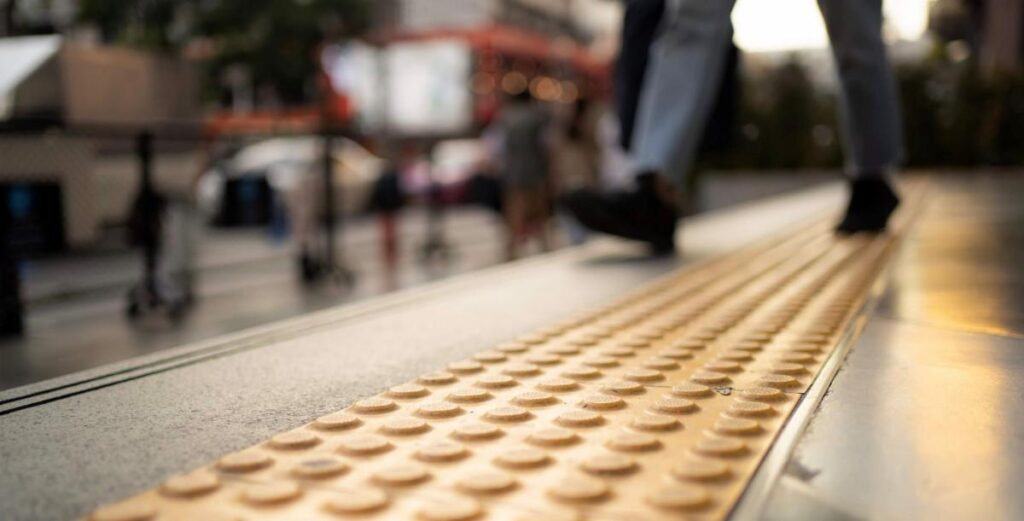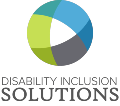Braille on the door. Bumps on the curb. Raised letters on signage. The texture on a handrail. Though they blend into the background for some people, these tactile cues are a critical accommodation for people with disabilities.
Tactile cues provide information that can be gleaned through touch. They can take many forms and be seen in many different environments, from public spaces like parks and museums to corporate spaces like office building elevators and conference rooms.

There are many different types of tactile cues that will enhance your environment. Five of these include:
- Tactile paving: Tactile paving is a system of ultra-bright or highly contrasting colored pavers with grooves or domes on the walking surface. The textured surface alerts people with visual disabilities of approaching streets or grade changes.
- Textile Selection: Materials and finishes can be used to change acoustics, and changes in floor coverings can serve as a tactile indicator when transitioning from one area to another. Hard surfaces on floors can also help with a cane because the tapping can create echoes that serve to define the space. A hierarchy of finishes and a variety of spaces will provide wayfinding cues.
- Handrail Indicators: 80% of workplace accidents occur on stairs. Tactile cues on handrails are great tools for identifying the top of stairs, upcoming landings, and bottom of stairs. Options for these cues include etchings into the rails, small rivets placed into the bottom of the rail, or abrasive paint. These cues help not only those who are blind or have low vision, but also people who may be distracted by mobile devices while taking the stairs.
- Braille signs: Braille is a system of writing that uses patterns consisting of two columns of three dots apiece to assist people with visual disabilities.
- Tactile maps: These maps are designed to be read by touch. Raised surfaces on the map allow people with visual disabilities to orient themselves in unfamiliar environments.
Incorporating tactile cues into your environment doesn’t just help people with visual impairments navigate their environment more efficiently and safely. It enhances the accessibility of your space and creates a more inclusive environment overall.
Are you interested in creating a space that everyone can access and enjoy, regardless of their abilities? Then, reach out to my team and me. We can provide detailed information on how to select, install, and maintain various types of tactile cues.





0 Comments